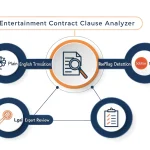Log File Analysis
Is this tool helpful?
How to Use the Log File Analysis Tool Effectively
Step-by-Step Guide for Analyzing Server Logs
This Log File Analysis Tool helps you quickly interpret server logs to identify issues, patterns, and insights. Follow these steps to get the most out of it:
- Prepare Your Log File: Ensure you have the raw text content of your log file ready. This could be from a web server, application, or any service generating logs.
-
Paste Log Content: Copy and paste the entire log file text into the designated “Log File Content” field.
Example inputs:- 2024-01-12T13:45:22Z [DEBUG] Cache refreshed successfully
- 2024-01-12T13:50:10Z [ERROR] Failed to process payment transaction
-
Specify Time Frame (Optional): Enter the time span covered by the logs to guide the analysis.
Example inputs:- March 1-7, 2024
- Past 3 days
-
Indicate Server Type (Optional): Describe the server or service generating the logs for contextual analysis.
Example inputs:- Node.js API Server
- PostgreSQL Database Server
- Submit for Analysis: Click the “Analyze Log File” button to send your data for processing.
- Review the Results: Examine the detailed analysis highlighting patterns, anomalies, and suggestions for improving server reliability and performance.
- Copy Results (Optional): Use the “Copy to Clipboard” feature to save or share your analysis quickly.
What Is Log File Analysis and Why It Matters
Log file analysis is the process of reviewing timestamped records generated by servers, applications, and network devices to extract meaningful insights. It helps you detect problems, monitor system health, and optimize performance.
Purpose and Benefits of Log File Analysis
Analyzing log files enables you to:
- Identify Issues Early: Spot errors or unusual activity before they impact system users.
- Optimize Performance: Pinpoint bottlenecks and optimize resource usage.
- Enhance Security: Detect suspicious events such as unauthorized access attempts.
- Ensure Compliance: Maintain proper log retention and audit trails to meet regulatory requirements.
- Plan Capacity: Use trends in log data to forecast resource needs and scale proactively.
- Simplify Troubleshooting: Trace root causes of failures or errors with detailed log insights.
Key Components of Effective Log File Analysis
- Data Aggregation: Collect logs from multiple sources within your infrastructure.
- Parsing and Structuring: Convert raw logs into structured entries to identify meaningful fields.
- Pattern Detection: Recognize recurring events or anomalies that require attention.
- Correlation: Link related events across different systems to provide full context.
- Visualization and Reporting: Display findings in understandable formats to support decision-making.
Practical Usage of the Log File Analysis Tool
This tool helps system administrators, DevOps engineers, and security professionals quickly analyze log data without manual review.
Common Use Cases
- Incident Response: Identify root causes of outages by highlighting error spikes and failure patterns in logs.
- Performance Monitoring: Detect trends like increasing CPU usage or slow response times for proactive optimization.
- Security Audits: Spot unauthorized access attempts, brute-force login patterns, or suspicious activity markers.
- Error Correlation: Aggregate logs from apps, databases, and services to trace cascading failures or interdependent issues.
- Capacity Planning: Review utilization trends over time to determine when infrastructure scaling is required.
Example Scenario: Security Threat Analysis
Imagine you notice unusual login failures on your authentication server.
By pasting the relevant log content into the tool and specifying “Past 48 hours” for the time frame and “Authentication Server” as the server type, you’ll receive an analysis like:
- “Detected over 300 failed login attempts from 40 distinct IP addresses between 2 a.m. and 4 a.m.”
- “Multiple accounts targeted repeatedly, suggesting a brute force attack.”
- “Recommend blocking suspicious IPs and enabling multi-factor authentication.”
Example Scenario: Performance Bottleneck Detection
Suppose your application experiences slow response times intermittently.
After submitting server logs with a specified time range “Last 7 days” and server type “Application Server,” the tool may highlight:
- “Noticeable increase in database query timeouts during peak hours correlating with user traffic spikes.”
- “High CPU utilization on worker processes coincides with slow API responses.”
- “Suggest optimizing database queries and scaling server resources during busy periods.”
Why Use This Log File Analysis Tool?
Using this tool streamlines log analysis across multiple scenarios, providing you with actionable insights faster than manual review. The customized inputs for time frame and server type focus results, saving you time and improving troubleshooting accuracy.
Key Advantages
- Speed: Automates parsing and pattern recognition to deliver quick results.
- Contextual Insight: Tailors analysis based on your specified server type and log period.
- Accessibility: User-friendly interface requires no advanced technical skill.
- Actionable Feedback: Provides clear suggestions for resolving issues and optimizing performance.
- Collaboration: Easily copy and share results to coordinate with your team.
Important Disclaimer
The calculations, results, and content provided by our tools are not guaranteed to be accurate, complete, or reliable. Users are responsible for verifying and interpreting the results. Our content and tools may contain errors, biases, or inconsistencies. Do not enter personal data, sensitive information, or personally identifiable information in our web forms or tools. Such data entry violates our terms of service and may result in unauthorized disclosure to third parties. We reserve the right to save inputs and outputs from our tools for the purposes of error debugging, bias identification, and performance improvement. External companies providing AI models used in our tools may also save and process data in accordance with their own policies. By using our tools, you consent to this data collection and processing. We reserve the right to limit the usage of our tools based on current usability factors.







